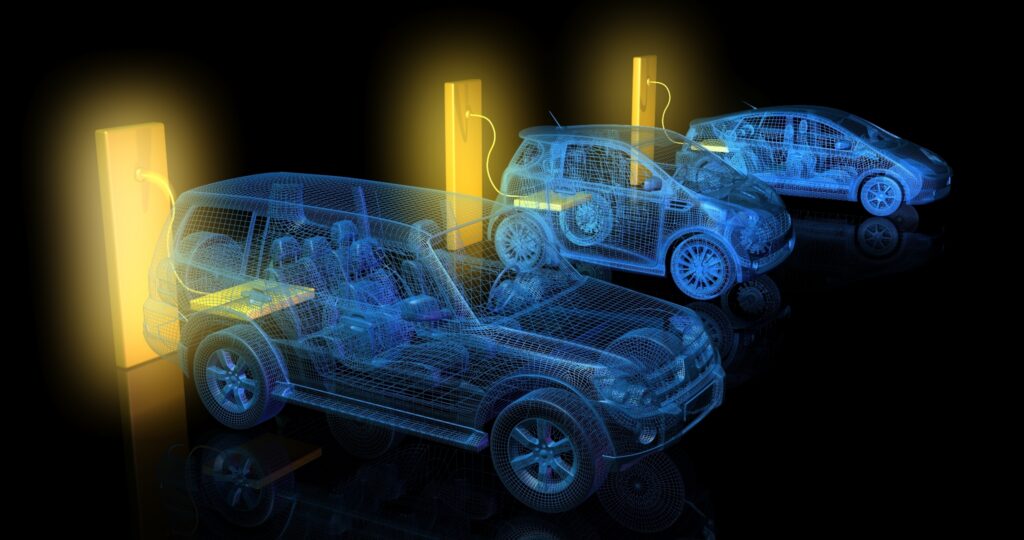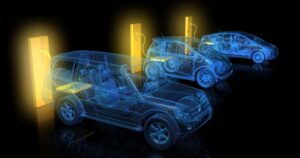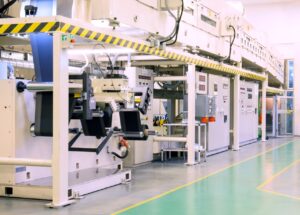

Projects that increase the range of electric vehicles (EVs), create batteries that can charge in as little as 12 minutes and hydrogen-powered heavy goods vehicles (HGVs) are all being supported by the UK Government.
As part of Britain’s decarbonization drive, the Advanced Propulsion Centre has appointed British battery cell manufacturer AMTE Power as lead partner of a three-year “ULTRA” project, which is geared to put the United Kingdom among the leaders in cell technology for electric vehicles. AMTE Power heads up the project’s steering committee alongside BMW Motorsport and electric vehicle manufacturer Arrival.
The other participating firms are Magtec, designer of electric drive systems – which has the aim of proving the UE cell performance in two of their commercial electric vehicles; Petalite, a leader in electric vehicle charging that will provide fast charging equipment; and Avocet, the precision metal supplier that will provide a UK copper foil supply chain.
The £2.3 million project also builds on what AMTE Power calls Ultra-High Power technology, a re-chargeable pouch format battery cell. Earlier developments projects ran in conjunction with specialist manufacturers given as Jaguar Land Rover, Cosworth and Williams. AMTE said in a statement that “importantly, this project will not affect the existing commercialization plans for these cells, as set out at the time of our IPO, it will instead be complementary and focus on readiness to mass produce for our targeted automotive client base.”
Both high power and energy cells will be developed, according to the company. AMTE Power is a developer and manufacturer of lithium-ion and sodium-ion battery cells for specialist markets.
Automotive Industries (AI) asked Kevin Brundish, Chief Executive Officer of AMTE Power, what the difference is between high power and energy cells.
Brundish: Basically, all power cells store energy, which is the equivalent of the amount of fuel you have in your tank. A high-power cell is designed to have as much power capability packed into the smallest volume of weight possible. It is designed for fast discharge and recharge, such as when pulling off or accele

rating.
Energy cells keep the vehicle running – they are the more conventional cell, which are not as good at fast discharge. Both cells can do both jobs, but not at optimal efficiency. In essence, you want as small a high-powered battery as possible to get a vehicle moving rather than asking energy cells to do the job, which would affect their range. There is a knock-on effect as well. Fast discharge can damage cells in conventional batteries. It is all about optimizing performance.
AI: Does this mean you need two battery systems?
Brundish: We see a natural evolution to a sort of battery hybrid. But, our high power battery is also very capable sitting alongside a fuel cell. A number of major brands are looking at hydrogen fuel cells. These cells are very good at providing range. But what they’re less efficient at is providing bursts of power. Combining the fuel cell with a high-power battery reduces the size needed for the fuel cell.
We’ve never been a company that says there’s one solution (battery or fuel cell). We have positioned ourselves to be complementary to whichever system the vehicle manufacturer selects. Since the turn of the century, we have also been manufacturing conventional energy cells.
We started the business eight years when our view was that this (EV revolution) was going to happen. We like to see ourselves as slightly visionary because you don’t start a lithium-ion company on the back of the market as it was, because it was a market that was dominated by large players, but we really saw the opportunity coming.
Our view was that the demand was going to be hard to service. And even if demand could be met, it would be by large players focusing on the high volumes. That would leave secondary markets open, which are also massive. So, our play was to focus on the high-performance sector.
Since the turn of the century, we have also been manufacturing conventional cells. We were pretty much the first manufacturer in the United Kingdom to do that.
AI: What is going to be the outcome from the three-year project?
Brundish: With the power cells, the program’s outcome will be that we will have a demonstration of an ultra-fast charge system. In parallel, we will be looking at building our capacity for lithium-ion battery production as a country. Part of the key is that you need to get the supply chain working together to achieve a common outcome.
The steering committee provides us with clear focus on where we should be focusing. The other partners are all about integrating cells into vehicles and providing the charging stations. And then you’ve got us and our supply chain, which enables the battery community to see the full value chain, rather than working in isolation.
AI: Is there a large enough home market to support battery manufacturing?
Brundish: Historically, the UK makes, one and a half to two million cars a year. It is one of the largest manufacturers in Europe. That is spread across quite a wide variety of different manufacturers. There’s the mainstream, and also a very strong presence of high-performance vehicle manufacturers. This lends itself to demand for high-power batteries.
The industry is rescaling towards an electric powertrain rather than internal combustion. Some of the 800,000 jobs that the industry supports will need to morph into the new supply chain, where the battery is going to be one of the most expensive elements.

At present batteries are being shipped all around the world, which is not the way to have a low-carbon solution. Purchasing batteries and components from places that don’t use low-carbon energy will not reduce overall carbon emissions.
There’s also a Rule of Origin agreement between the UK and the European Union, which is our biggest market.
With the cost of the battery being around 50% of a vehicle, we believe British-based OEMs will want to manage origin and costs closely and will be looking for more UK parts in vehicles.
AI: Given the speed of electric vehicle uptake, do you have the luxury of three years for development?
Brundish: Because we are already an established manufacturer, we are okay with the timing. Version one will be released at the end of this year, or early next year. So, we’re talking about an evolutionary process where technological development and manufacturing capacity will be built in parallel.
AMTE Power has advanced plans for expanding its existing manufacturing capacity, which is currently based in Scotland. We will be making a final decision about a gigafactory probably in 2022.
AI: How important is government support?
Brundish: Government intervention helps to de-risk innovation. That does not mean that innovation will not happen, but it would probably take longer to come to fruition.
AI: So, this is an exciting place to be.
Brundish: It’s amazing.












More Stories
DuPont materials science advances next generation of EV batteries at The Battery Show
How a Truck Driver Can Avoid Mistakes That Lead to Truck Accidents
Car Crash Types Explained: From Rear-End to Head-On Collisions